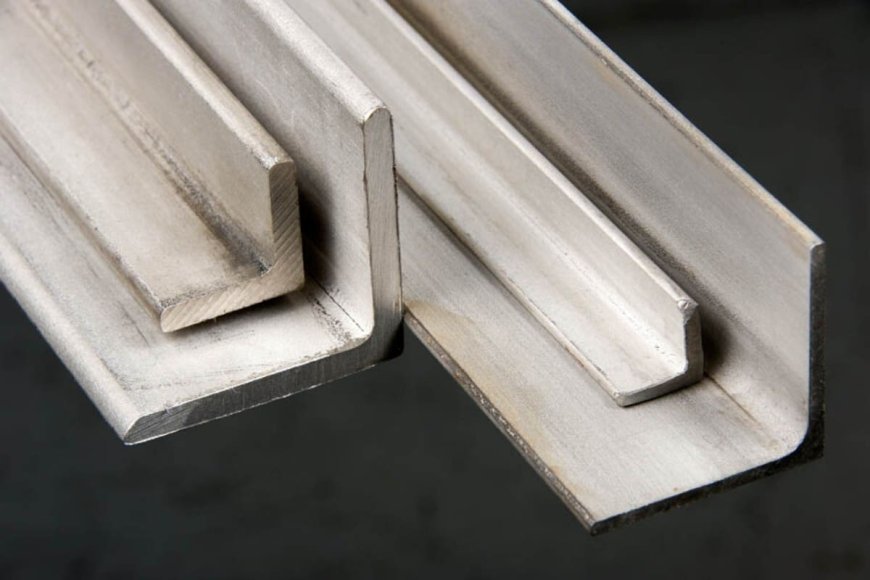Advantages of Stainless Steel 316 Angle in Industrial Use
Discover the benefits of using Stainless Steel 316 angle in industrial applications. Learn about its corrosion resistance, strength, durability, and versatility for construction, marine, chemical processing, and architectural projects.

Stainless Steel 316 is a premium grade of stainless steel known for its superior corrosion resistance and strength. Among its various forms, the stainless steel 316 angle is particularly valued in industrial applications for its versatility and robustness. This blog delves into the advantages of using Stainless Steel 316 angle in industrial settings and why it stands out as a preferred choice for many applications.
What Is Stainless Steel 316 Angle?
Stainless Steel 316 angle refers to a structural steel section with a right-angled shape, typically used in construction and manufacturing. The "316" grade indicates that the steel contains molybdenum, enhancing its resistance to corrosion, especially in chloride-rich environments. This angle is commonly available in various sizes and lengths, offering flexibility for diverse industrial applications.
Key Advantages of Stainless Steel 316 Angle
-
Exceptional Corrosion Resistance: One of the most significant advantages of Stainless Steel 316 angle is its outstanding resistance to corrosion. This grade is highly effective in resisting rust and staining caused by exposure to harsh environments, including marine and chemical industries. The added molybdenum provides enhanced protection against chloride-induced corrosion, making it ideal for use in coastal or industrial settings where salt and other corrosive substances are prevalent.
-
High Strength and Durability: Stainless Steel 316 angle boasts high tensile strength, making it capable of withstanding significant loads and stresses. Its durability ensures that it can maintain structural integrity under challenging conditions, including high-pressure environments and heavy-duty applications. Over time, financial savings result from this robustness's decreased need for replacements or repairs.
-
Temperature Resistance: Stainless Steel 316 angle performs well in a wide range of temperatures, including elevated temperatures. Its ability to retain strength and resist deformation at high temperatures makes it suitable for applications in sectors such as electricity generating, chemical processing, and oil and gas.
-
Excellent Weldability: Stainless Steel 316 angle exhibits good weldability, allowing for easy fabrication and assembly. The material can be welded using standard methods, making it a versatile choice for constructing frameworks, supports, and structural components. The ease of welding ensures that complex designs and modifications can be executed efficiently.
-
Aesthetic Appeal: The smooth, shiny surface of Stainless Steel 316 angle adds an aesthetic quality to industrial installations. Its appearance makes it suitable for applications where visual appeal is important, such as architectural structures and exposed frameworks. The material's ability to maintain its appearance over time adds to its appeal in both functional and decorative uses.
-
Low Maintenance Requirements: Due to its resistance to corrosion and staining, Stainless Steel 316 angle requires minimal maintenance. The material's durability ensures that it remains functional and visually appealing with minimal intervention. This low maintenance requirement reduces long-term operational costs and ensures a longer service life.
-
Versatility in Applications: There are many different industrial applications for stainless steel 316 angle, making it a highly versatile material. Common uses include structural support in buildings, framing in industrial equipment, brackets, and reinforcements. Its adaptability makes it a valuable material in various sectors, including construction, manufacturing, and marine environments.
-
Compliance with Industry Standards: The stainless steel 316 angle satisfies the requisite performance parameters for safety and quality by adhering to multiple industry norms and regulations. Its compliance with standards makes it a reliable choice for critical applications that require adherence to specific specifications.
Applications of Stainless Steel 316 Angle
-
Construction: In construction, Stainless Steel 316 angle is used for structural supports, frameworks, and reinforcements. Because of its strength and resistance to corrosion, it is perfect for use in building braces, columns, and frames.
-
Marine Industry: Due to its exceptional resistance to seawater corrosion, Stainless Steel 316 angle is commonly used in marine applications. It is employed in shipbuilding, offshore structures, and coastal installations where exposure to saltwater is a concern.
-
Chemical Processing: In chemical processing facilities, a stainless steel 316 angle is used to construct equipment supports, frames, and supports for piping systems. Its resistance to chemical corrosion ensures reliable performance in harsh environments.
-
Oil and Gas Industry: Stainless Steel 316 angle is utilized in the oil and gas industry for building structures, supports, and equipment. It is appropriate for this demanding industry due to its resistance to high-pressure and corrosive environments.
-
Architectural and Decorative Uses: The aesthetic appeal of the Stainless Steel 316 angle makes it suitable for architectural and decorative applications. It is used in modern designs for railings, trims, and other visible structural elements.
Conclusion
Stainless Steel 316 angle offers numerous advantages in industrial applications, including exceptional corrosion resistance, high strength, temperature resistance, and ease of maintenance. Its versatility and aesthetic appeal make it an important material with a variety of uses, from construction and marine environments to chemical processing and architectural projects. By choosing Stainless Steel 316 angle, industries can benefit from a durable, reliable, and visually appealing material that meets the demands of various applications.
What's Your Reaction?




























